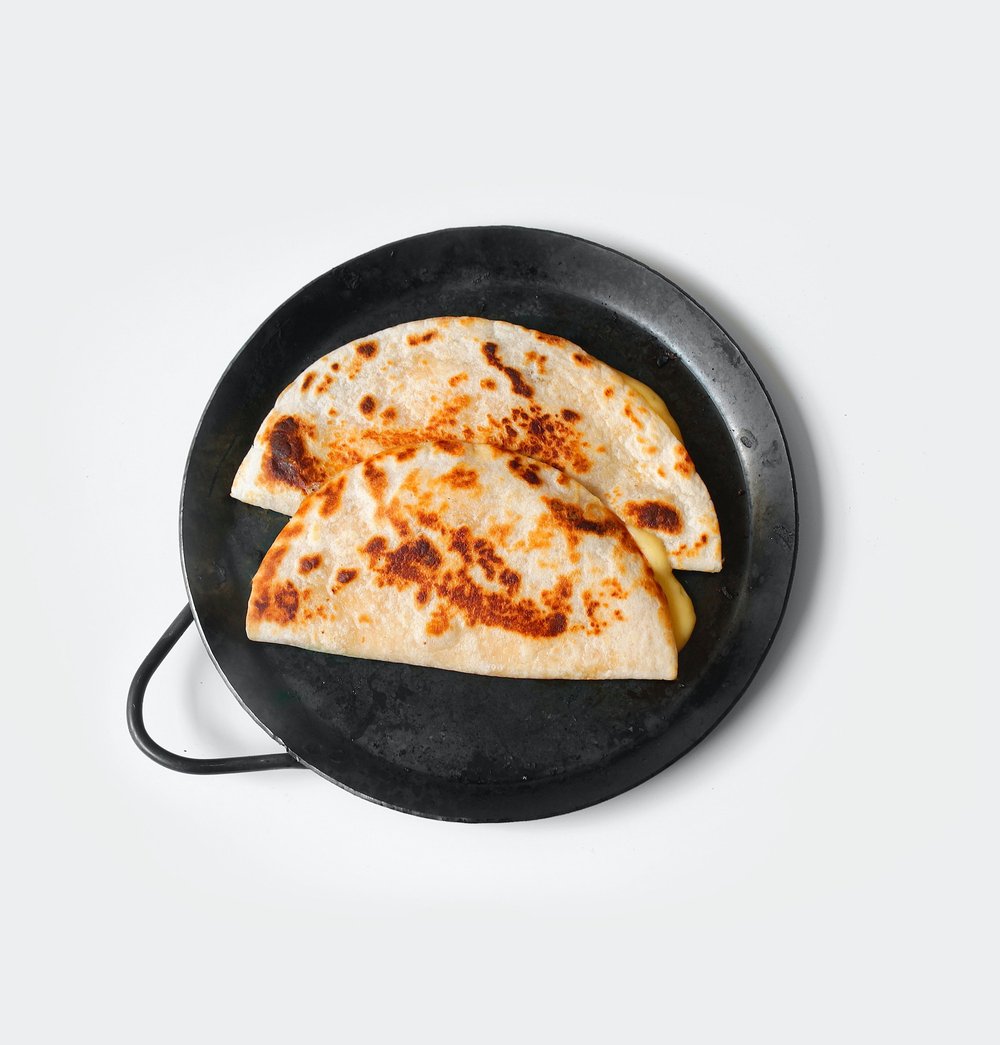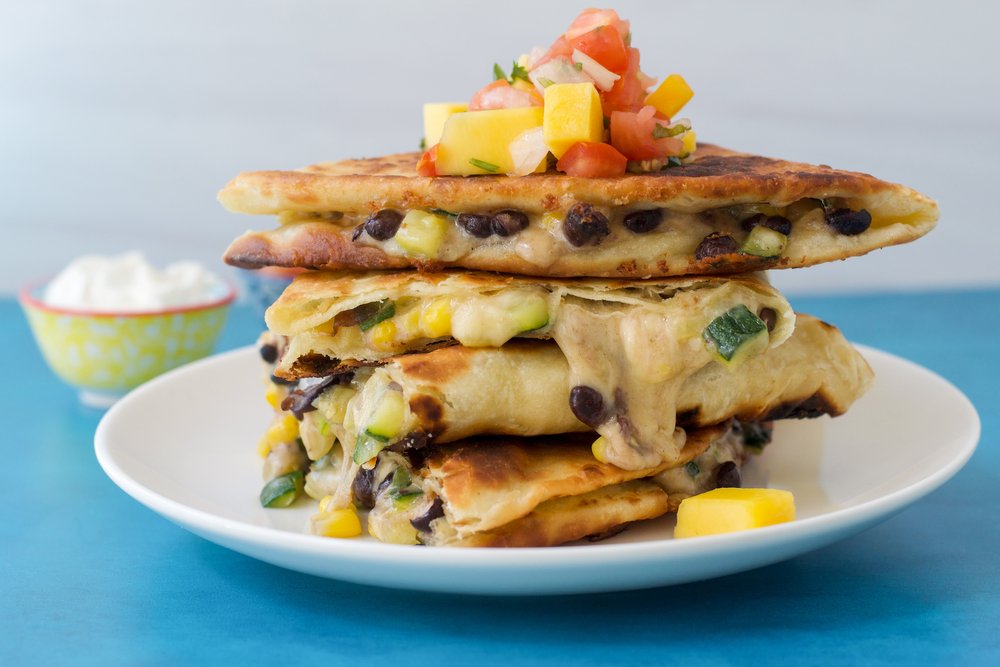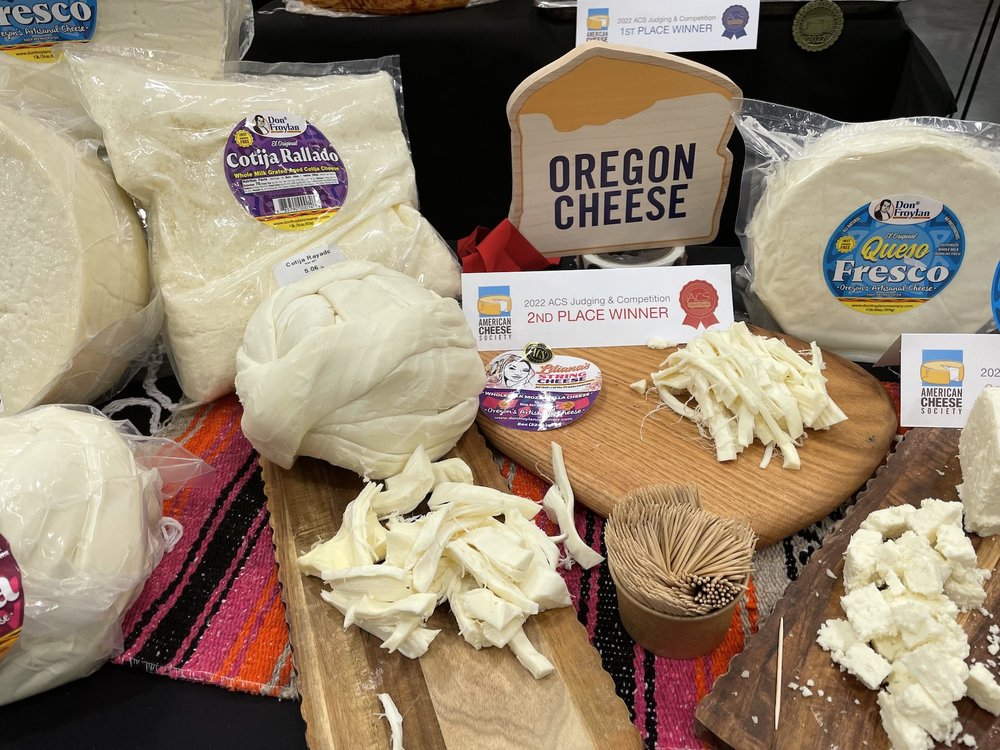Quesadillas are not just for late-night snacking or kids menus. Elevate your quesadilla to the next level with authentic ingredients and expert techniques.

Some of the world’s most delicious dishes started out as a way to repurpose leftovers. Think of arancini (uses leftover risotto), fried rice, or the many dishes designed to use up leftover bread – from French toast to panzanella. Even burrata was created as a way to repurpose leftover shreds of mozzarella and cream. Thank goodness for those thrifty cooks who refused to waste food!
Quesadillas, too, were created as a way to repurpose leftover food. And believe it or not, the original versions did not always include cheese. Mexican food expert Adriana Martin, of Adriana’s Best Recipes, explains that a quesadilla is a tortilla that is stuffed with any number of different ingredients – cheese being merely one of the possibilities. According to Martin, in an earlier time in Mexico “not everyone had access to cheese as it was expensive or not readily available.” Put another way, as Pati Jinich explains in her book Pati’s Mexican Table, it is the folded turnover shape that makes a quesadilla a quesadilla, not the cheese.

Does a Quesadilla Require Queso?
But, what about the fact that the Spanish word for cheese, “queso” appears to be in the very name “quesadilla?” Fair point, but not proof that a quesadilla must contain cheese. Martin cites two early Mexican cookbooks Nuevo Cocinero Mexicano (1888) and La Cocinera Poblano from 1907, both of which describe quesadillas as possibly, but not always, containing cheese. And of course, the debate continues to this day: if you order a quesadilla in Mexico City, where they are a common street food, you need to specify if you want it with cheese.
Despite this surprising history, when we in the United States think of quesadillas, we imagine molten, gooey cheese – and possibly some other fillings as well. So let’s stick with that definition for now. This is The Cheese Professor after all.
In fact, agreeing that quesadillas must at least contain cheese is helpful because you can honestly argue about every other element of what makes an authentic quesadilla. Corn tortillas or flour? Fried or toasted? Big or small? Martin explains:
You can find quesadillas all over Mexico. Some regions prefer fried (sometimes also called empanadas fritas.) Other use blue corn masa instead of white. Some like it long and thin; others like it small with melty cheese and thick flour tortillas.
Martin explains further that flour tortillas filled with chihuahua cheese are typical in northern Mexico. Rick Bayless, in his book Rick Bayless’s Mexican Kitchen, notes that, by contrast, cooks in central and southern Mexico make their quesadillas with fresh masa dough. If this is confusing, keep in mind that Mexico is a vast nation with a variety of regional cuisines, like China or India. So it is only natural that quesadillas vary by region.

Which Cheeses Go in Quesadillas
In short, there is more than one way to make an authentic Mexican quesadilla and there is no reason not to try them all. Because we have decided that, for our purposes, quesadillas contain cheese, let’s start with that. Seek out a Mexican cheese, such as Oaxaca or chihuahua. Oaxaca is a stringy, semi-firm, cow’s milk cheese with a mellow, buttery flavor that often comes in a rope or knotted shape. Chihuahua cheese is closer to cheddar with a mild, salty, slightly sour flavor. Both cheeses melt well and appear in many of your favorite Mexican dishes.
If you live near a grocery store with a good selection of Latin products, you should be able to find these cheeses without difficulty. Possible substitutes include white Monterey Jack cheese for chihuahua or fresh Italian mozzarella, like Nodini, for Oaxaca cheese. Martin gently cautions that “the cheese mixes sold at the store are for Tex-Mex style quesadillas, not authentic Mexican quesadillas.”
Culinary director for the Seattle cookbook store Book Larder, Polina Chesnakova – who wrote a book called Hot Cheese no less – agrees. She implores that “for that ultimate cheese pull, shred your own cheese! The pre-shredded stuff contains thickeners and preservatives that help prolong shelf life, but prevent your cheese from reaching its ooey-gooey, melty potential.” That is not to say, however, that you cannot mix cheeses in your quesadilla. Chesnakova loves “playing around with different cheese combos because it layers flavors and textures.” The quesadilla recipe in Hot Cheese, in fact, combines Oaxaca with another Mexican cheese, cotija.
Quesadilla Fillings
Beyond cheese, the other fillings are entirely up to you. Remember, quesadillas came about as a way to repurpose leftovers, so look in the refrigerator for odds and ends – such as roasted vegetables, leftover steak, chicken or sausage, or canned beans – to use as fillings. But keep in mind that the fillings should already be cooked – unless it is an ingredient that you normally eat raw, like scallions. Also, make sure that the fillings are cut into bite-sized pieces and are not too wet.
According to Martin, classic quesadilla fillings include squash blossoms, huitlacoche (a corn fungus that is prized in Mexico for its flavor), mashed or roasted potatoes, roasted poblano peppers known as rajas, refried beans, chorizo and more. Whatever fillings you choose, Chesnakova advises mixing them with the cheese in a bowl prior to sprinkling them onto the tortilla to make sure everything is well-incorporated and that the cheese surrounds the fillings and holds them together.
Tortillas for Quesadillas
As for the tortilla, using fresh masa is not realistic for most of us, so store-bought tortillas are the way to go. If choosing corn, look for a local, freshly made variety. A good corn tortilla should have a bit of elasticity and give to it; a bad one will rip in half if you pull on it. Above all, a corn tortilla should taste of nothing so much as fresh corn, nutty and sweet. Where I live in Chicago, we have terrific, locally made corn tortillas available just about everywhere – often for just a dollar or two. But, truth be told, I prefer flour tortillas for quesadillas because they are larger and more pliable.
Cooking Quesadillas
In terms cooking the quesadilla, as Martin explains, both toasting in a skillet (or griddle) or deep-frying are acceptable. But again, for home cooks, deep-frying can be intimidating. So it is entirely appropriate to stick with toasting quesadillas in a skillet. Martin recommends a cast iron skillet or a comal, which is a smooth, flat griddle used throughout Latin America.
Chesnakova prefers a well-oiled skillet set over medium heat to give the quesadilla “a beautifully burnished, crunchy crust.” When toasting the quesadilla in the skillet, make sure to move it around to promote even browning and press down on the tortilla with your spatula to ensure that the bottom stays in contact with the oil in the skillet. Finally, let the finished quesadilla rest for a few minutes before cutting into it.
Not only can a quesadilla be made with multiple kinds of tortillas and fillings, but there is also the question of toppings. Martin explains that, traditionally, salsa is not used to top a folded quesadilla. Instead, she recommends that you put the salsa inside the quesadilla, which sounds intriguing. Fried quesadillas, on the other hand, call for toppings like shredded lettuce, crema, and red or green salsa according to Martin. Hot sauce is always a welcome addition.
Personally, I think that a quesadilla needs a bit of acidity to cut through the richness of the cheese, so I recommend a pickled element – like pickled red onions or jalapeños – or something sharp like fresh pico de gallo. But I also never say no to a dollop of tangy sour cream on my quesadilla – or really anywhere else for that matter.
Are you ready to level up your homemade quesadillas? If so, try my all-purpose quesadilla recipe that allow you to mix and match the fillings based on what you have on hand. Get creative and don’t forget that some cheese and a tortilla can transform your leftovers into one of the very best lunches you can eat.

Design-Your-Own Quesadilla Recipe
Serves 4
16 oz. Oaxaca or Chihuahua cheese, grated or chopped
2-3 cups of diced, cooked vegetables, beans, meat or a combination thereof
4 flour tortillas, 10-inch size
2 TB vegetable oil (plus more as needed)
Hot sauce, pice do gallo, chopped cilantro or sour cream for serving
1. Preheat the oven to 250 (to keep the cooked tortillas warm prior to serving).
2. Combine the cheese and any toppings in a large bowl and toss until combined.
3. Divide the cheese mixture evenly among the four tortillas, spreading the mixture on only one half of the tortilla and leaving a small border around the edge. Fold the tortillas in half, making sure that the filling is completely covered by the tortilla.
4. Heat the oil in a 10-inch skillet set over medium heat. When the oil is shimmering, carefully place one of the folded tortillas in the skillet and cook until the bottom is browned, about 2 minutes, moving the tortilla around to promote even cooking and pressing down on the top with your spatula to seal the edges. Flip the tortilla and cook until the second side is browned and the cheese completely melted.
5. Remove the cooked quesadilla to a baking sheet and place in the warm oven while you continue cooking the remaining quesadillas. Repeat with the remaining tortillas, adding more oil as necessary.
6. When all of the quesadilla have been cooked, cut each one in half and serve immediately with your preferred toppings.
